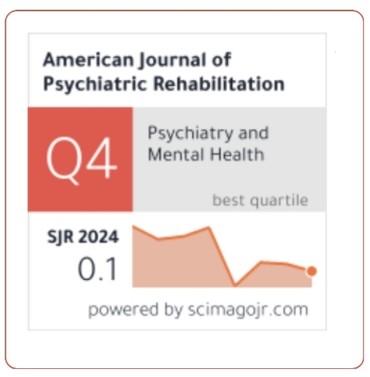Enhancing Accessibility and Effectiveness on Social Networking Sites for Visually Impaired (VI) and Hearing-Impaired (HI) Users through the Use of AI Technology
DOI:
https://doi.org/10.69980/ajpr.v28i1.465Keywords:
Social Networking Sites, Artificial Intelligence, Visual Impairment, Hearing Impairment, User Experience, AI-based Assistive TechnologiesAbstract
Access to social networking sites forms an integral part of contemporary communication and interaction, but it becomes a terrific challenge for those with visual as well as auditory impairments. This paper investigates the ways in which Artificial Intelligence (AI) technology can help improve social media accessibility while enhancing effectiveness for the impaired. Access can be made possible through AI-based features such as speech recognition, automatic captioning, image descriptions, and personalized changes in the interface. The research assesses the user experience of these AI technologies at this time, in order to point out areas where they need improvement, to improve their efficacy. The researchers adopted a survey on the perceptions of the accessibility features "enriched" with AI by the users. The outcome indicates wide-ranging user satisfaction, as most users find the currently available technologies useful, but questions surrounding usability and awareness remain. The study suggests that despite being more accessible, it would be realized only in the ongoing innovation, user participation, and community-driven development that is realized for its inclusive networking of a social network of all users. The insights gained by them could help in the formulating of more responsive, user-centric AI solutions that address specific needs of people with visual and auditory impairments.
References
1. Ghafoor, K., Ahmad, T., Aslam, M., & Wahla, S. (2024). Improving social interaction of the visually impaired individuals through conversational assistive technology. International Journal of Intelligent Computing and Cybernetics, 17(1), 126-142.
2. Kumar, A., & Nagar, D. K. (2024). AI-Based Language Translation and Interpretation Services: Improving Accessibility for Visually Impaired Students. As the editors of Transforming Learning: The Power of Educational, 178.
3. Kumar, V., Barik, S., Aggarwal, S., Kumar, D., & Raj, V. (2024). The use of artificial intelligence for persons with disability: a bright and promising future ahead. Disability and Rehabilitation: Assistive Technology, 19(6), 2415-2417.
4. Gandhewar, N., & Mohan, S. (2022). Accessibility in disability: revolutionizing mobile technology. Intelligent Systems for Rehabilitation Engineering, 151-173.
5. Sinha, A., & Kumar, T. (2024, January). An Inclusive Approach to Addressing Challenges for the Speech and Hearing Impaired. In International Conference on Smart Computing and Communication (pp. 469-481). Singapore: Springer Nature Singapore.
6. Bekeš, E. R., Galzina, V., & Kolar, E. B. (2024, May). Using human-computer interaction (hci) and artificial intelligence (ai) in education to improve the literacy of deaf and hearing-impaired children. In 2024 47th MIPRO ICT and Electronics Convention (MIPRO) (pp. 1375-1380). IEEE.
7. Chemnad, K., & Othman, A. Digital accessibility in the era of artificial intelligence—Bibliometric analysis and systematic review.
8. Dokania, H., & Chattaraj, N. (2024). An assistive interface protocol for communication between visually and hearing-speech impaired persons in internet platform. Disability and Rehabilitation: Assistive Technology, 19(1), 233-246.
Downloads
Published
Issue
Section
License
Copyright (c) 2025 American Journal of Psychiatric Rehabilitation

This work is licensed under a Creative Commons Attribution 4.0 International License.
This is an Open Access article distributed under the terms of the Creative Commons Attribution 4.0 International License permitting all use, distribution, and reproduction in any medium, provided the work is properly cited.









